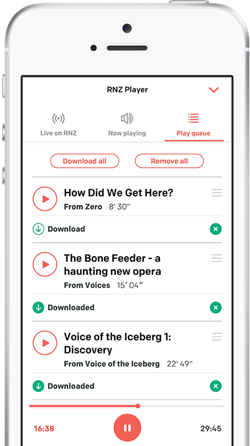World Bank funds disaster resilience project in Solomons
The World Bank reveals more details about grants to Solomon Islands and how it will improve disaster preparedness.
Transcript
The World Bank says major grants it made to Solomon Islands last week, before the devastating floods on Guadalcanal, will help ensure greater preparedness for any future natural disasters.
On April the 1st it signed agreements that involve grants of more than $22 million US dollars.
Thirteen million goes towards the Sustainable Energy Project and $9 million to the Community Resilience to Climate Change and Disaster Risk in Solomon Islands Project.
The World Bank's country representative, Anne Tully, told Don Wiseman what the Community Resilience project will achieve.
ANNE TULLY: One, it'll support ministries and provincial governments looking at how to integrate disaster risk management into their planning and their investments. Then it will also look at monitoring climate issues as well as improving information on disaster so that people can get information more readily about when there's a tsunami coming, or an earthquake. Finally the large part of the project will be looking at how to do community infrastructure and provincial infrastructure in a way that is more climate and disaster resilience. We have school constructed in a way, in areas, or in a way that is not going to be prone to being washed away when there is a flood or an earthquake.
DON WISEMAN: A second part of this grant is going into sustainable energy, in what way?
AT: That second project is the sustainable energy project. That's working with the Solomon Islands Electricity Authority which three or four years ago was in serious problems. The bank has been working with the government to put it on a much more secure financial and technical footing and then strengthen its generation and distribution capacity. At the moment, I think very few people in Solomon Islands have access to electricity unless they have a generator or something like that. Fifteen to 16 percent overall across the country have access to electricity. So the first step has been to build the capacity of the Solomon Islands Electricity Authority to get back on a secure financial footing, and now our investments are going to strengthen their generation and distribution capacity. So that people at least around Honiara, in the first instance, will have more reliable electricity with a lot fewer outages.
DW: Since these grants were announced early last week, we've had this horrific disaster on Guadalcanal. So I guess the bank is also looking at just what it can do. Have you got specific plans in place to help Solomon Islands in this recovery?
AT: Typically the bank is not involved most immediately in the sort of relief efforts. But we have a couple of projects that we're using now to help in that early response period. We have a large scale employment that we're supporting, called the 'Rapid Employment Project' in Honiara, and we have managed to support the government in allocating some funds within that project to help with clean-up. So it employs a lot of young people around the city, typically it's been young people and women, to do street cleaning. And we will be using that project to help with some of the massive clean-up that will need to take place.
DW: And the second aspect of what you're doing now...
AT: So there's a couple of projects like that, that we're re-allocating to help communities either restore or rehabilitate that's been destroyed or do clean up, so there's a couple of areas like that. Even within the electricity project, if there's problems that the floods have created with electricity supply we can look at that through those on-going projects. We are talking with the government and those donors about helping facilitate a broader damage assessment. Damage and loss assessment that looks at the long term rehabilitation needs, and then from that what financing is needed to restore bridges or to fix up community gardens or get people back into houses. The bank has done work like that in Western Samoa and other places to actually assess the economic and social impacts of the disaster and what the financing requirements are.
To embed this content on your own webpage, cut and paste the following:
See terms of use.

